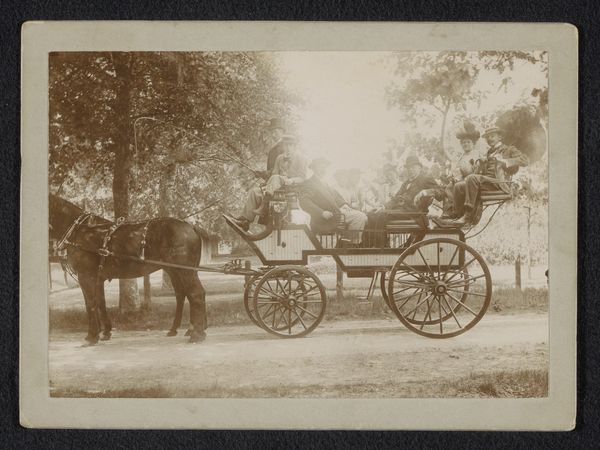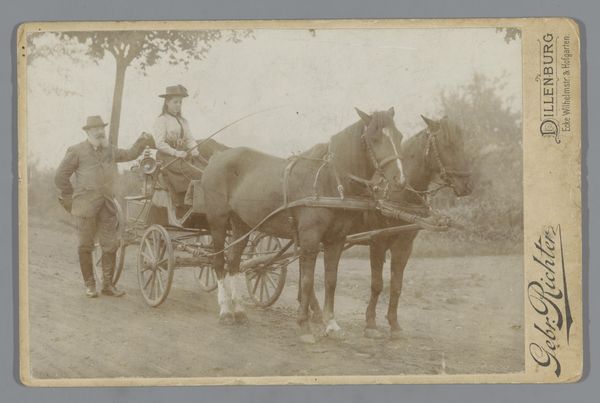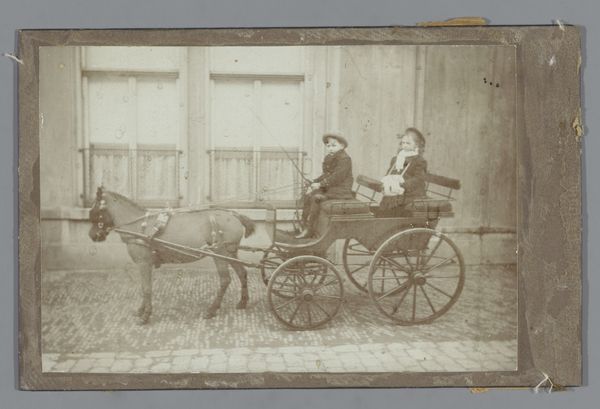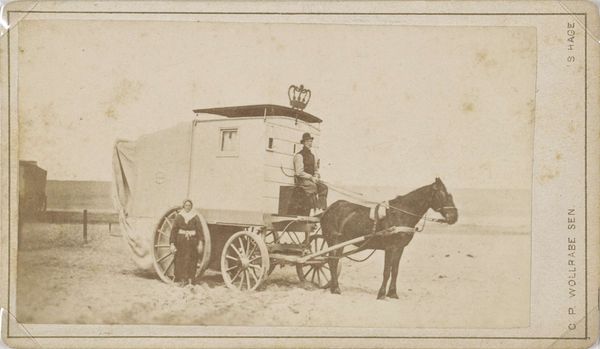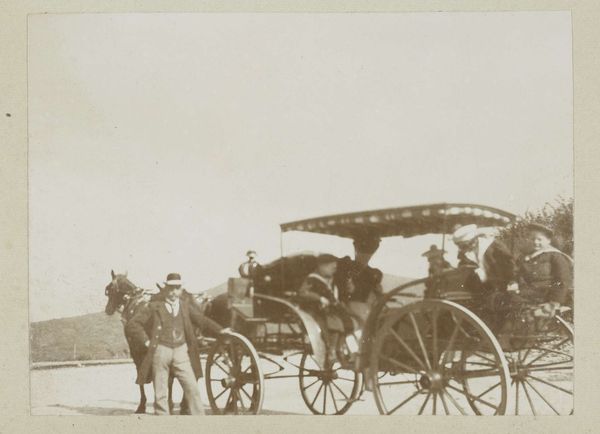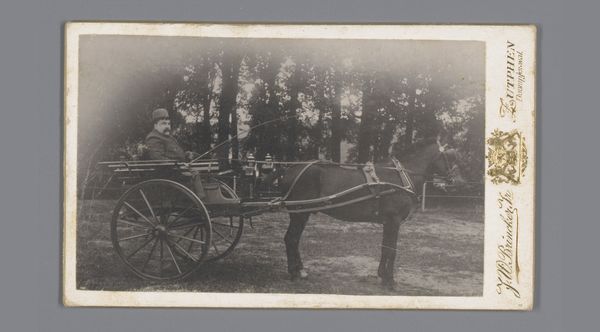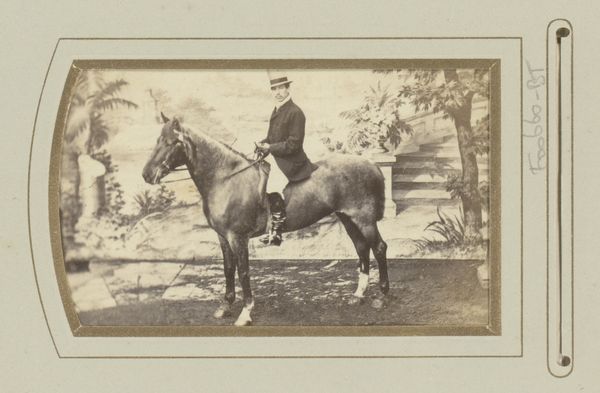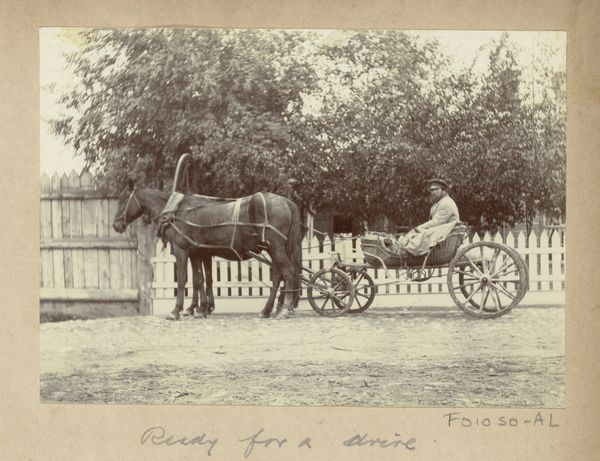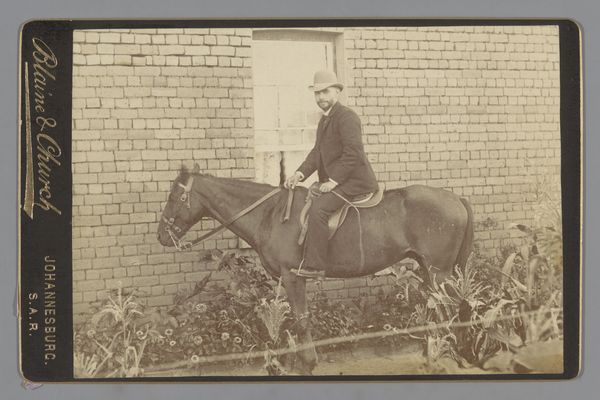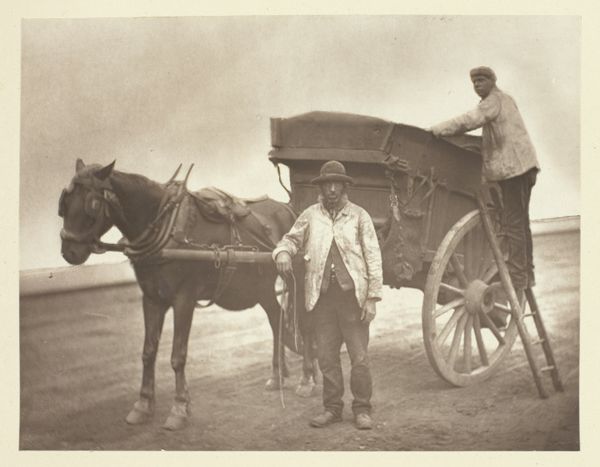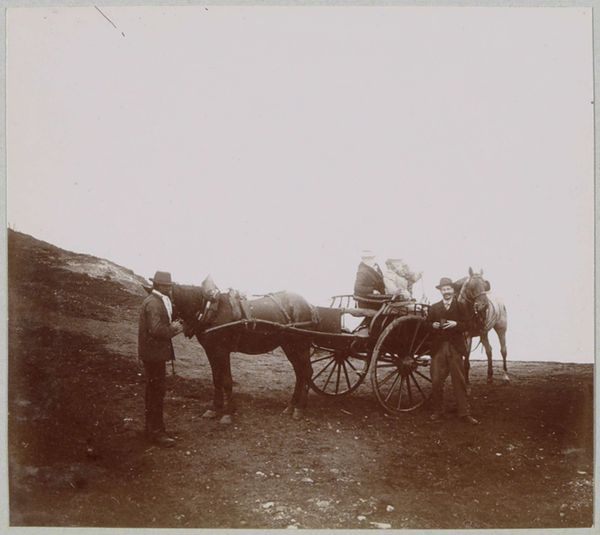
Dimensions: height 103 mm, width 138 mm
Copyright: Rijks Museum: Open Domain
Editor: Here we have "William and Henri Titus in Prospect Park, Brooklyn NY," an albumen print, likely from around 1875, attributed to the American Photograph Company. It's quite a formal portrait, but the park setting gives it a somewhat relaxed, genre painting feel too. What catches your eye in terms of understanding this image? Curator: I find it fascinating how this image operates within a developing visual culture. On one hand, you have the deliberate composition that clearly echoes portraiture traditions. But consider the setting, Prospect Park. It was relatively new at the time, meant as a designed space for public leisure. Photography democratized portraiture. To have one’s image captured in a space deliberately created for all citizens presents some fascinating egalitarian tensions. Editor: That’s a great point about the democratization aspect. Did having their photograph taken in a public park, instead of in a studio, change its social meaning? Curator: Exactly! The move to a public space is deliberate. Note how the carriage situates them neither solely in nature, nor wholly separated from it. How might this image reinforce or challenge ideas around class and leisure, particularly with access to new, designed urban green spaces such as Prospect Park? The two gentlemen project an image of middle-class leisure, but does the photograph, as a medium itself, allow that projection to become attainable, or merely a constructed reality? Editor: It seems that the accessibility afforded by the new medium also played with established social status! What a democratizing force this photo represents! Curator: Precisely! By examining the intersection of these social and cultural shifts within this photograph, it helps us see how the very act of image-making and display participated in a negotiation of American identity and urban life in the late 19th century. Editor: I hadn’t thought about the tensions it reveals, but looking at the piece now, I definitely see the ways photography plays into both upholding and breaking down social norms.
Comments
No comments
Be the first to comment and join the conversation on the ultimate creative platform.
